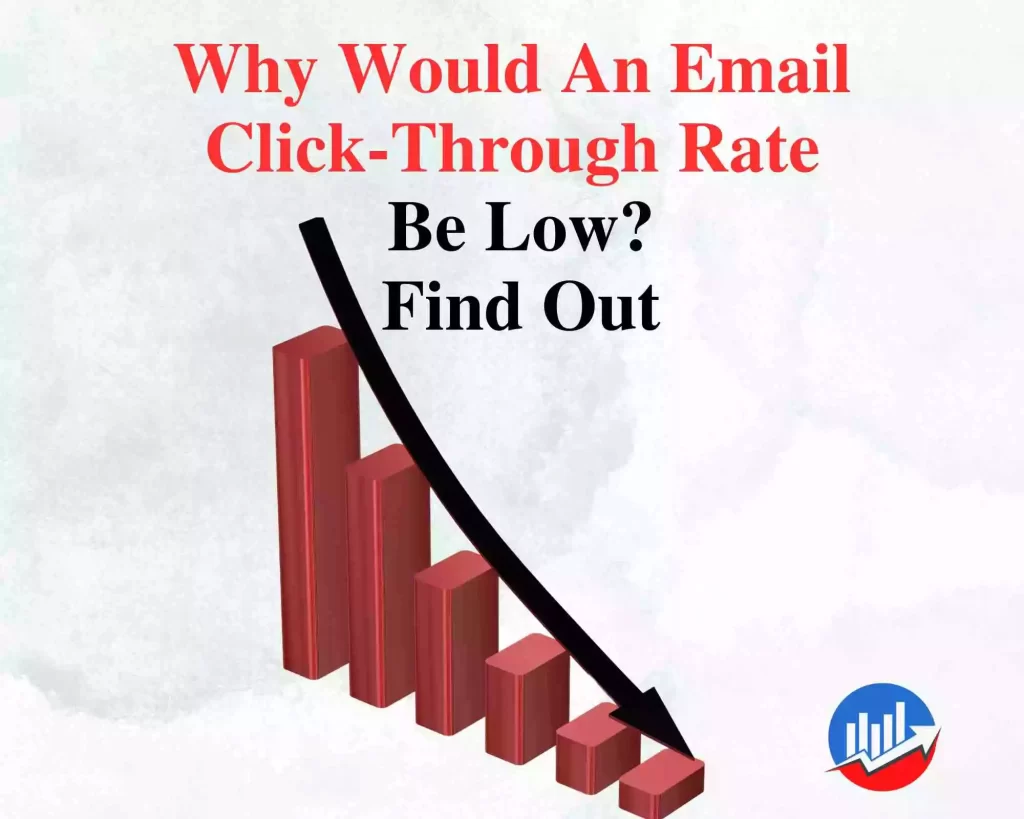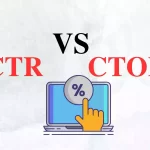Have you ever sent out an email campaign and are disappointed by the low number of click-throughs rate despite the effort you put in it, why would an email click-through rate be below?
You’re not the only one asking the question right now! I and Many email marketers deal with poor click-through rates at some times. But there is surely a way out.
An email click-through the rate might be low owing to numerous causes, such as unengaging subject lines, bad email design, irrelevant content, and many more.
In this blog article, I’ll discuss most of the basic reasons why an email click-through rate could be poor and present some recommendations for increasing your results. So if you’re ready to enhance engagement and generate more clicks, keep reading!
Learn how to increase your email click-through rate here.
I will urge you to get yourself a cup of coffee. This would be a lengthy tutorial because I am going to cover every possible reason that could cause a low click-through rate.
So let’s dive in
What Causes Low Click-Through Rate Email?
Email marketing has been a proven and the best strategy for organizations to reach out to their target audience and increase sales. Yet despite its being the best, not all email marketing gives the best outcomes.
One of the essential metrics in determining email marketing performance is the email click-through rate (CTR). The CTR metric measures the proportion of receivers that click on a link in an email. Which helps to determine the interest and engagement of your audience with the content.
A low CTR might be a reason for worry since it may suggest that the email is not connecting with the target audience. But here are several typical reasons why an email click-through rate may be low, and
give advice on how to increase it. Check out the difference between a high and low email click-through rate
1. Poor Subject Line
The first thing a receiver sees in their inbox is the subject line, which may make or break an email campaign. A subject line that is inaccurate, weak, or misleading may result in low open rates and, as a result, a low CTR.
The subject line should be clear, concise, and interesting, giving the recipient a reason to open the email. A/B testing may be used to identify which subject lines are the most successful.
2. Irrelevant Content
If the email’s content is irrelevant to the receiver, they are less likely to click on any links inside it. Segmentation and personalization can be used to deliver emails to certain groups of subscribers, depending on their interests or activity. Customization may also be utilized to make the material more relevant to the receiver, hence boosting the odds of a better CTR.
3. Too Much Email Design
The design of the email may also have a big influence on the CTR. Emails that are difficult to read or have poor layouts might deter receivers from clicking on any links. A clean, aesthetically attractive design that is suited for mobile devices might inspire recipients to interact with the information. Please read our guide on how to design an email that gets opened.
4. Timing
The timing of the email might also affect the CTR. According to statistics. Sending an email at the incorrect time might result in the email being lost in the recipient’s inbox or not being viewed. A/B testing can also be used to help discover the best time to send emails, depending on the target audience’s behavior.
5. Over-promotion
If the email is highly about promoting products and has no value, recipients may regard it as spam or tune it out. The content of the email should be educational and interesting and deliver value to the
receiver. Adding too many links or calls to action (CTAs) may also contribute to a low CTR. According to statistics. One or two well-placed CTAs will be more successful than dozens spread throughout the email.
6. Lack of Clarity
If the email content is clear and clear, the receiver may know what step to take. For example, if the email is advertising a product, but the terms and conditions need to be clarified, the receiver may not go to the website to purchase. Giving clear, concise and plain information will assist in enhancing the click-through rate.
7. Poor Call-to-Action (CTA)
The CTA is an important part of any email campaign since it prompts the recipient to perform a certain action. If the CTA is not clear, the receiver may not click through. The CTA should be aesthetically attractive, properly positioned, and clearly express what the receiver may anticipate by clicking the link.
8. Deliverability Issues
If an email fails to reach the recipient’s inbox owing to deliverability issues, it will not be able to generate any clicks. Typical causes of deliverability issues include employing spam trigger phrases in the subject line, sending too many emails too rapidly, or having a poor sender reputation. To prevent these concerns, it is crucial to keep a clean email list, utilize a reliable email service provider, and follow best practices for email marketing.
9. Sender Reputation
If the receiver does not trust the sender, they are less likely to click on any links inside the email. Establishing trust takes time and effort, and needs companies to be open, true and honest in their
relationship with the audience. Adding social evidence, such as testimonials or reviews, may also assist in developing trust and enhance the click-through rate
10. Unoptimized Landing Pages
Even if the email content and CTAs are good, the landing pages need to be optimized for conversions so the click-through rate can stay high. Landing pages should be aesthetically attractive, simple to browse and contain the information the receiver expects to see. The landing page should also be optimized for the precise action the receiver is being requested to perform, whether completing a purchase, filling out a form, or signing up for a subscription.
11. Email Frequency
If the receiver gets too many emails from a given sender, they may grow weary and cease engaging with the material. This can make the receiver feels overwhelmed by the frequency of the emails. To avoid email
frequency, organizations can segment their email list and adapt the content and frequency of the emails to each category.
12. Technological fault
Technological faults also lead to a low email click-through rate. For example, broken links or graphics that fail to load might dissuade users from clicking on links inside the email. It is crucial to test emails extensively before sending them to verify that all links and graphics are functioning properly.
13. Mobile Compatibility
According to statistics, more and more individuals are reading their emails on mobile devices. This implies that email campaigns must be optimized for mobile Compatibility. If the email content is not mobile-friendly and does not appear correctly on a mobile device, the receiver may not be ableto click through to the website or take any other intended action.
14. Inactive Email List
An email list with a substantial number of inactive subscribers might significantly affect the click-through rate. Inactive subscribers are individuals who have not interacted with the email content in a long time or have never opened an email. To prevent this, organizations may frequently clean up their email list by eliminating inactive subscribers or conducting re-engagement efforts to urge them to start participating with the material again.
15. Competition and Seasonality
The competition may also have a factor in the click-through rate of an email campaign. If a firm is sending emails at the same time as its rivals, it may be tough to stand out and get clicks. Similarly, seasonality may also affect email engagement since consumers may be busy at specific periods of the year or have different priorities. It is vital to evaluate the timing of email messages and change them properly to enhance interaction.
16. Overuse of Pictures and Graphics
Although photos and graphics may increase the visual appeal of an email, overusing them can have the opposite effect and adversely damage the click-through rate. If an email has too many photos or graphics, it might slow down the load time and distract the receiver from the key content and call to action. It is crucial to establish a balance between aesthetic appeal and message clarity to optimize engagement.
17. Poor Segmentation
Email segmentation is breaking an email list into smaller groups depending on certain criteria, such as demographics, behavior, or hobbies. Organizations need to segment their email list effectively to ensure the content is relevant to the receiver, resulting in a good click-through rate. Segmenting the email list and personalizing the content to each group’s individual requirements and interests help enhance engagement and click-through rates.
18. Lack of Customization
Customization is a strong strategy for enhancing email engagement and click-through rates. If the email content is not tailored and does not speak directly to the recipient’s needs and interests, it may not attract their attention or urge them to take action. Customization can be as easy as addressing the recipient by name or giving specific product suggestions based on their prior purchases.
19. Absence of Clear Value Proposition
If an email does not effectively express the value proposition and advantages of taking the desired action, it may not persuade the receiver can click through to the website or do any desired activity. The email message should clearly describe the advantages of performing the requested action and gave a compelling case for the receiver to interact with the information.
20. Lack of Testing and Optimization
Testing and optimizing are important for enhancing email engagement and click-through rates. Companies must test alternative email components, such as subject lines, email content, CTA placement, and
scheduling to ensure they are able to enhance engagement. It is crucial to continually test various email features and adjust depending on the findings to boost engagement over time.
Conclusion
Those are the 20 reasons that cause my previous emails to have a low click through rate. If you can follow them through and work on it I assure you of a better result in your next email. But you have to know it
might take time for you to understand what your audience truly wants. The secret is to give relevant, valuable content with an attractive design suited for a target audience’s tastes. By regularly testing and tweaking email campaigns. You can improve email click-through rates and reach your targeted outcomes.
I wish you a greater result in advanced.





